Best Sunscreen for Combination Skin – Hydration & Oil Control


Caring for combination skin can be complex, as it includes both dryness and excess oil. The T-zone (forehead, nose, and chin) usually gets oily, while the cheeks may feel dry or normal. Extra care is essential for this skin type, particularly when protecting against the sun. Choosing the right sunscreen ensures balanced hydration, oil control, and effective defense against harmful UV rays.
What Makes Combination Skin Different from Normal Skin?
Unlike normal skin, which has balanced oil and moisture levels, combination skin struggles with contrasting needs. The T-zone tends to produce excess sebum, making it prone to acne and shine, while the rest of the face may experience dryness, flakiness, or sensitivity. This imbalance makes product selection more challenging compared to other skin types.
Why Sunscreen Is Essential for Combination Skin?
Sunscreen is vital for combination skin because it protects both oily and dry areas from harmful UV rays. Without it, oily zones may suffer from clogged pores and acne, while dry spots become dehydrated and prone to irritation. Consistent use of sunscreen protects against premature aging, sunburn, pigmentation, and uneven tone, maintaining healthy, balanced skin.
Best Sunscreens for Combination Skin
VinSun Sun Screen Lotion SPF 50+
A powerful sunscreen designed to protect delicate skin from harsh sun damage. Its advanced formula provides broad-spectrum protection, making it ideal for daily outdoor use.
- Guards delicate skin against damage caused by sun exposure
- Provides high-level protection from harmful UV rays
- Suitable for all skin types
Sunscreen Lotion SPF 30+
A lightweight, fast-absorbing, non-oily sunscreen perfect for everyday wear. It helps shield the skin from sunburn while delaying early signs of aging like fine lines and wrinkles.
- Fast-absorbing, non-oily formula for everyday use
- Shields the skin from sunburn and early signs of aging
- Keeps skin soft, smooth, and protected
Sunscreen Lotion SPF 60
An ultra-light, quick-absorbing sunscreen that offers strong sun protection without irritation. Its gentle formula helps keep skin safe from both UVA and UVB rays.
- Lightweight and quick-absorbing texture
- Protects skin from harmful UVA & UVB rays
- Gentle on skin, prevents irritation while offering strong sun defense
Also read - Best Sunscreen for Oily Skin
The Role of Moisturizer for Combination Skin
- Form a gentle barrier that reduces irritation from sunscreen.
- Help to prevent dryness and redness often triggered by Combination Skin.
- Ensure sunscreen spreads evenly without tugging or rubbing.
- Support the skin’s natural barrier, keeping it calm and hydrated under sun exposure.
What Should a Combination Skin Sunscreen Contain?
The right sunscreen for combination skin should balance hydration and oil control. Look for lightweight, non-comedogenic lotion formulations that feel comfortable on the skin without clogging pores. Key ingredients to consider are:
- Hydrating agents like hyaluronic acid or glycerin to keep dry areas moisturized.
- Broad-spectrum filters (a mix of chemical and mineral) to block both UVA and UVB rays.
- Antioxidants like Vitamin E that help protect the skin from free radical damage and support healthy, glowing skin.
- Mattifying ingredients such as silica or niacinamide to manage excess oil in the T-zone.
For protection levels, choose a sunscreen with at least SPF 30 or higher for daily use to ensure strong UVA defense. This will ensure that your skin stays safe from sunburn, tanning, premature aging, and uneven tone while keeping both oily and dry areas balanced.
Also read - Is Hyaluronic Acid Good for Combination Skin?
Do You Need a Moisturizer with Sunscreen?
Even with sunscreen, combination skin benefits from a lightweight moisturizer. Applying a gel-based or oil-free moisturizer before sunscreen helps lock in hydration for dry areas without clogging pores in the oily T-zone. Using a hydrating sunscreen may eliminate the need for a separate moisturizer.
Also read - Best Moisturizer for Oily Skin
How to Apply Sunscreen on Combination Skin?
Start your routine by cleansing the skin with a soft, mild cleanser. Apply a gentle, oil-free moisturizer to keep dry areas hydrated. Take a sufficient amount of sunscreen lotion (about two fingers’ worth) and spread it evenly across the face. Apply carefully to both the T-zone and dry cheek areas for complete coverage. Reapply every 2–3 hours when outdoors for consistent sun protection.
Also read - What to Apply First: Moisturizer or Sunscreen
Which Type of Sunscreen Is Best for Combination Skin?
Combination skin benefits from a mix of chemical and mineral ingredients, as this combination provides strong UV protection without being too heavy. A gel-based sunscreen is ideal since it controls oil in the T-zone while nourishing the dry areas. Select products labeled hydrating, mattifying, and non-comedogenic to support healthy, balanced skin.
Additional Tips for Combination Skin Sun Protection
- Reapply sunscreen every 2-3 hours when outdoors.
- Use blotting sheets to control shine instead of over-cleansing your skin.
- Layer sunscreen after using a gentle cleanser and a lightweight moisturizer.
- Avoid thick, greasy sunscreens that can clog pores.
Conclusion
Caring for combination skin requires a balanced approach, especially when it comes to sun protection. Choosing a lightweight, non-comedogenic sunscreen lotion with SPF 30+ ensures both oily and dry areas are protected. Combined with proper moisturizing and application habits, it helps maintain healthy, radiant, and well-protected skin every day.
Frequently Asked Questions (FAQs)
Q. Should I use the same sunscreen across oily and dry parts of my face?
A. Yes, a lightweight, non-comedogenic sunscreen lotion works well across combination skin, balancing hydration for dry spots while controlling oil in the T-zone without clogging pores.
Q. Can sunscreen prevent acne in combination skin?
A. Yes, using a non-comedogenic sunscreen helps prevent clogged pores in the oily T-zone, reducing breakouts while protecting dry areas from UV damage and irritation.
Q. Is SPF 30 enough for combination skin?
A. SPF 30 is sufficient for daily protection, paired with PA+++ for UVA defense. For prolonged sun exposure, a higher SPF may be needed to protect both oily and dry areas effectively.
Q. Does sunscreen help manage oiliness in the T-zone?
A. Yes, lightweight, non-comedogenic sunscreen lotions with mattifying ingredients like silica or niacinamide help manage excess oil while still hydrating drier areas of combination skin.
Sunscreen SPF 60+, Homosalate, Oxybenzone, Octisalate, Octocrylene, Avobenzone, Titanium Dioxide, Aloe Vera, Almond Oil, Vitamin E, Glycerine, Glyceryl Stearate, Bees Wax, Dimethicone, Purified Water & Fragrance
100gm in 1 tube
Recent Blogs
Disclaimer : Zeelab Pharmacy provides health information for knowledge only. Do not self-medicate. Always consult a qualified doctor before starting, stopping, or changing any medicine or treatment.

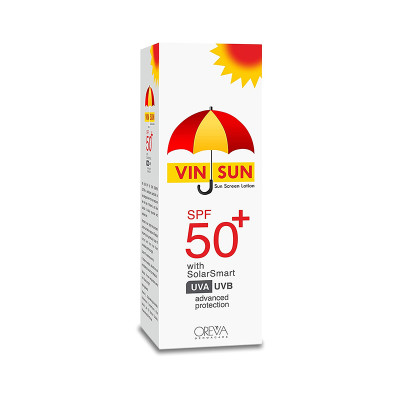

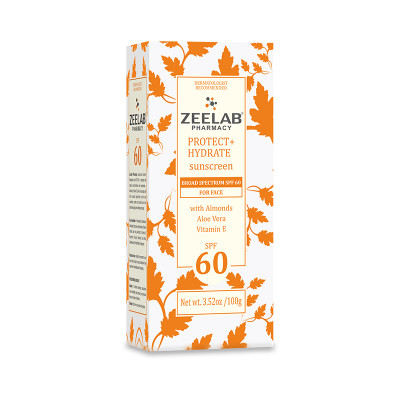
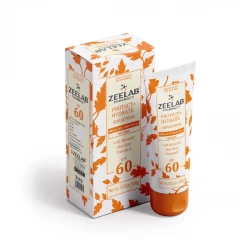
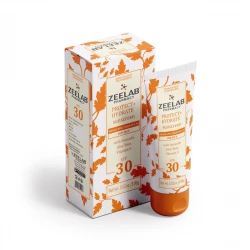
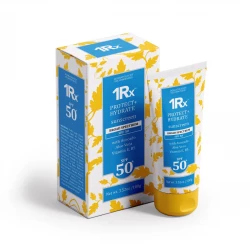















 Added!
Added!